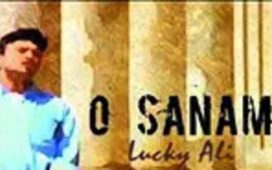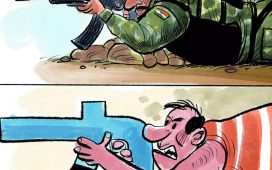
Instead, it has everything to do with the steadfast rejection of that silently dissenting historical witness: fact.
This is a serious problem in an age liberated by individual interpretation, PC rendering, social media influence, and compensative revisionism. In such a situation, fact is bound to be unreliable, because it stubbornly refuses to be explained, restrained, swayed, or altered. This is why fact-checking should only be invoked to contest the statement of an opponent, never to question the foundation of a belief.
You can imagine my relief, therefore, when I met an Ivy League college prof, who held that only the US had the right to develop and manage social media platforms because, unlike some other Asian and European countries, it was a nation of laws that held individual privacy and liberty to be sacrosanct. Despite such unshakeable conviction, I chose, in a Luciferian moment, to test him further.
‘Didn’t President Obama initiate a mass surveillance programme of citizens through the National Security Agency?’ He was silent for a moment, wracked by doubt, before he replied, ‘I cannot recall the exact details of that event, but I am sure that our laws would never allow digital platforms to monitor Americans. Unlike China,’ he continued, gaining confidence from the comparison, ‘Which does not deny that it spies on its citizens.’
I could not help but marvel at the man’s sense of certainty despite my reference to decade-old information.On my way back to India, though, I felt less hopeful. While I was confident that the common man would never let the dull body of fact lure him away from the faithful guarantees of patriotism, stock market performance, subsidy dependence, and temple construction, I harboured a long-held suspicion that the educated classes were likely to be more sceptical of novel perspectives and more hostile to theories that challenged their absurdly rational view of life, the universe and everything else.In this, as it turned out, I was delightfully mistaken.
Our PM had recently inaugurated the ‘re-opening’ of Nalanda University – after 800 years. Indians had much to be proud of, and even more to look forward to. One eminent academic said as much on a digital platform, lauding the ancient institution’s many achievements. But in his enthusiasm, he reset the founding date to the 5th c BC.
As such, it was only natural for him to conclude that worthies such as Ashoka had patronised Nalanda, adding to its already venerable reputation an odour of the most profound majesty. This was too good an opportunity to pass up. I needed to know if this academic measured up to his American counterpart.
‘Nalanda did not exist five centuries before Christ,’ I wrote to him, ‘It was built four centuries after Christ.’ To further challenge his belief, I insisted that if Ashoka had indeed patronised the school, the Mauryan monarch must have been summoned from a slumber of at least seven centuries by a powerful necromancer of unknown provenance.
But the scholar turned out to be a man of many letters, but little faith. He was willing to not only accept his error, but also to obey, henceforth, the dictates of fact. I was deeply disappointed.
But just as I was about to give up hope, another voice came to the rescue. ‘Your love for Christ is tremendous. Thanks for looking down on Indians. You are a true soldier of the Vatican.’
‘Callooh! Callay!’ I chortled, overjoyed. He was a learned member of the medical fraternity, who was unconvinced by my taking exception to a time difference of a mere 900 years while using Christ’s birth year as a point of reference. Jingoism is in no danger here. Let fact take heed.










